
Perhaps the most frequently cited bellwether of economic vitality is GDP growth. Rapid growth is indicative of a flourishing economy, while slow or negative growth suggests the opposite. Economic growth alone, however, often reveals very little about an area’s capacity for development and about the quality of life in that area.
To address these shortcomings, the United Nations Development Programme created the Human Development Index, a comprehensive measure that factors in education levels, health, and income across a population.
24/7 Wall St. created an index inspired by the U.N.’s HDI model to identify the worst counties to live in. We ranked all U.S. counties and county equivalents, including independent cities and Census areas, based on an index score of three key measures: life expectancy at birth, the poverty rate, and the share of adults with a bachelor’s degree.
Many of the counties on this list are in rural Appalachian coal country — an area that has been decimated by the decline of coal mining in the United States. Up against environmental regulations and relatively cheap natural gas, coal mining — once an economic pillar in communities across West Virginia and Kentucky — has become one of the fastest dying industries in the United States. Here is a look at America’s 25 dying industries.
Most of the remaining counties on this list are located in or around American Indian reservations. Native Americans commonly face generational poverty resulting, in part, from their historical mistreatment by the U.S. government. Certain existing conditions in some reservations also affect upward economic mobility. For example, reservation land is often communally-owned, making it difficult for local residents to build wealth through homeownership. Here is a look at the states with the most Indian reservations and tribal areas.
Click here to see the worst counties to live in
Click here to read our methodology
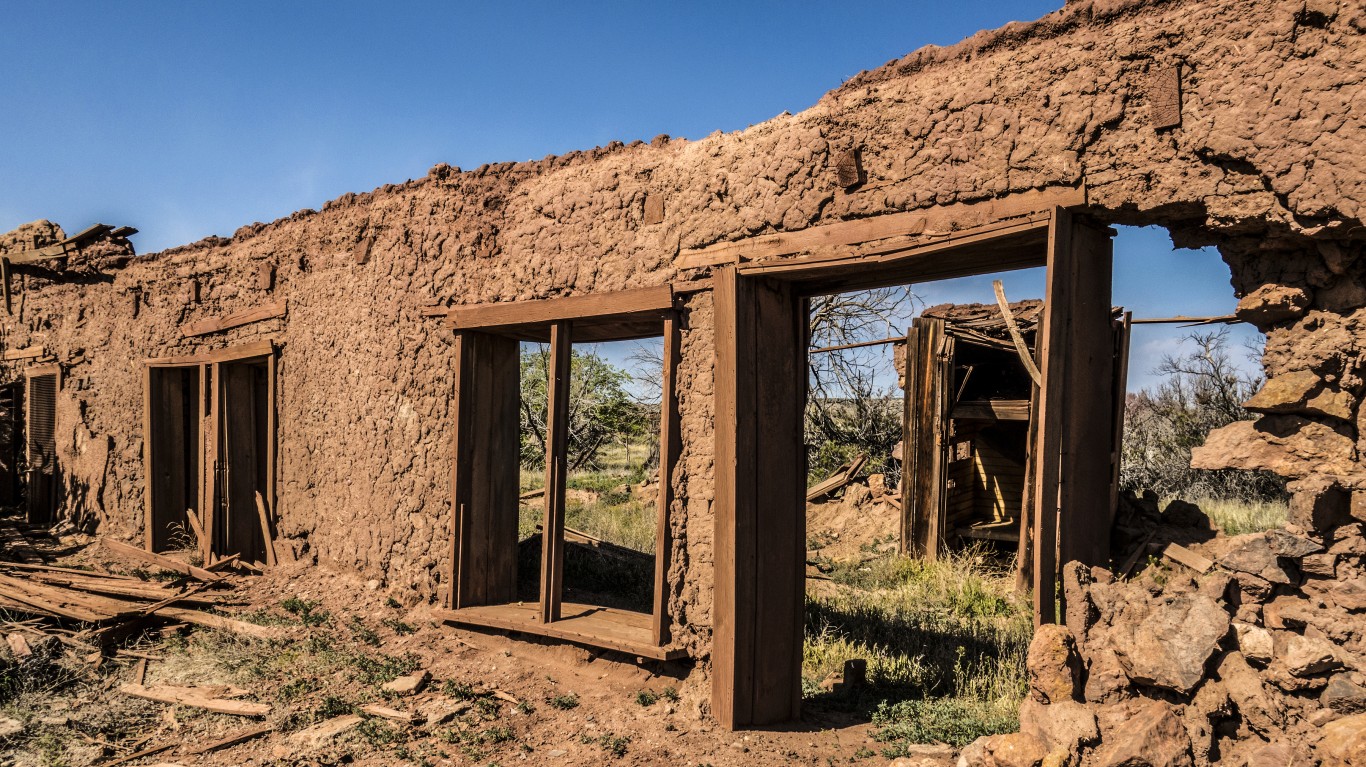
35. Apache County, Arizona
> 5-yr. pop. change: -0.6%
> Poverty rate: 35.3%
> Bachelor’s degree attainment: 11.7%
> Life expectancy at birth: 72.4 years
> Largest place in county: Chinle
With a lower than average life expectancy at birth and a higher than average poverty rate, Apache County is the only county in Arizona to rank on this list. Covering much of the Navajo Nation in the northeastern corner of the state, Apache County is also one of many counties on this list with a large Native American population. Due in part to historic mistreatment by the U.S. government and some laws that are unique to tribal land, economic conditions tend to be worse on Indian reservations.
In Apache County, more than one-third of the population lives below the poverty line, and more than one in every four residents depend on SNAP benefits to afford food. Additionally, life expectancy at birth in the county is just 72.4 years, well below the national average of 79.1 years.
[in-text-ad]
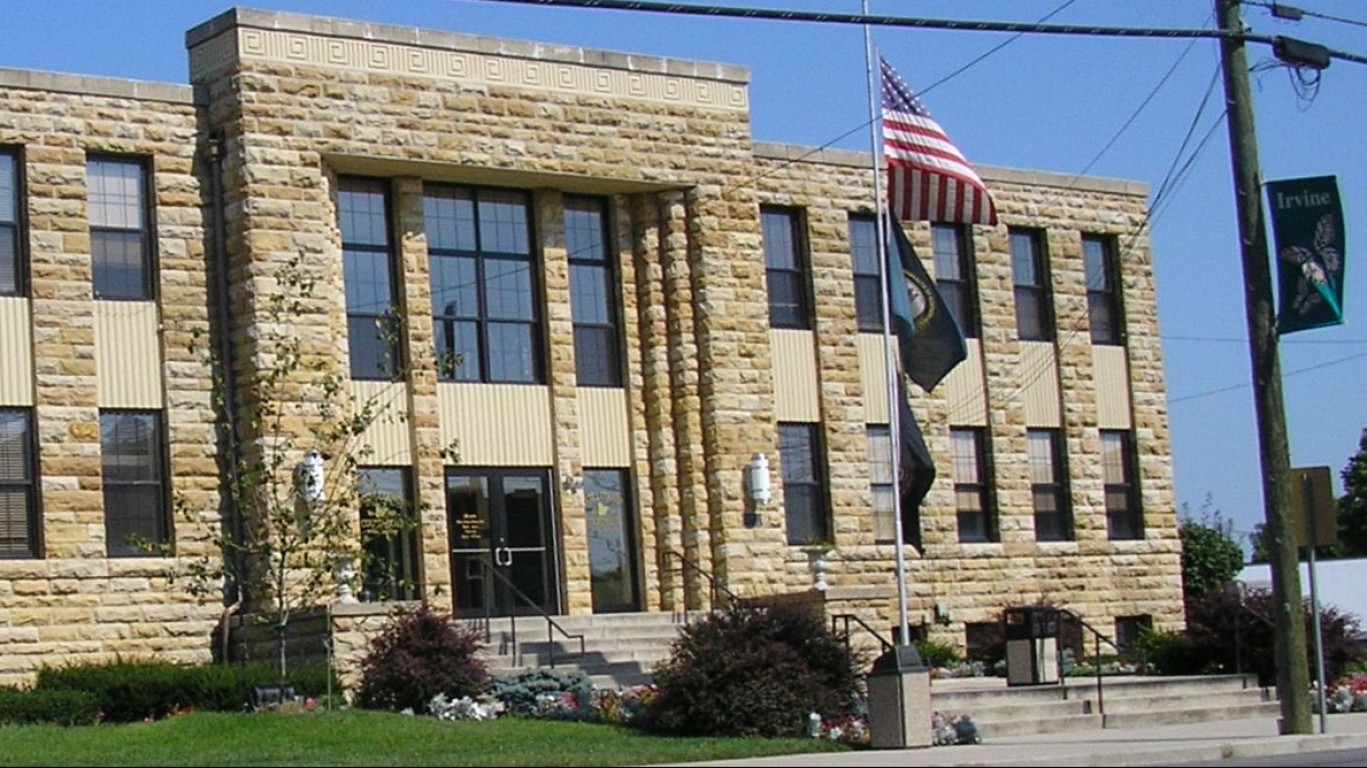
34. Estill County, Kentucky
> 5-yr. pop. change: -2.0%
> Poverty rate: 32.7%
> Bachelor’s degree attainment: 9.9%
> Life expectancy at birth: 71.6 years
> Largest place in county: Irvine
Estill County, Kentucky, is one of several rural counties in Appalachia to rank on this list. Historically, the local economy has centered on agriculture and coal mining, and though today the county is home to an industrial park, employment opportunities remain relatively scarce. Unemployment stands at 6.1% as of January 2020, well above the comparable national unemployment rate of 4.0%.
Higher educational attainment typically opens up a broader range of employment opportunities. In Estill County, just 9.9% of adults have a bachelor’s degree, and only 74.7% have a high school diploma. Nationwide, 31.5% of Americans 25 and older have a bachelor’s degree, and 87.7% have completed high school.

33. Floyd County, Kentucky
> 5-yr. pop. change: -6.4%
> Poverty rate: 31.7%
> Bachelor’s degree attainment: 11.2%
> Life expectancy at birth: 70.6 years
> Largest place in county: Prestonsburg
Job opportunities appear to be relatively scarce in Floyd County, Kentucky. As of January, the local unemployment rate was 7.9%, nearly double the comparable national rate. For those who are working, incomes are generally low. The majority of households in the county have an income of less than $32,000 a year, and nearly 16% of households live on less than $10,000 annually.
The weak local economy may be pushing some out of the area. In the last five years, the population of Floyd County fell by 6.4%.
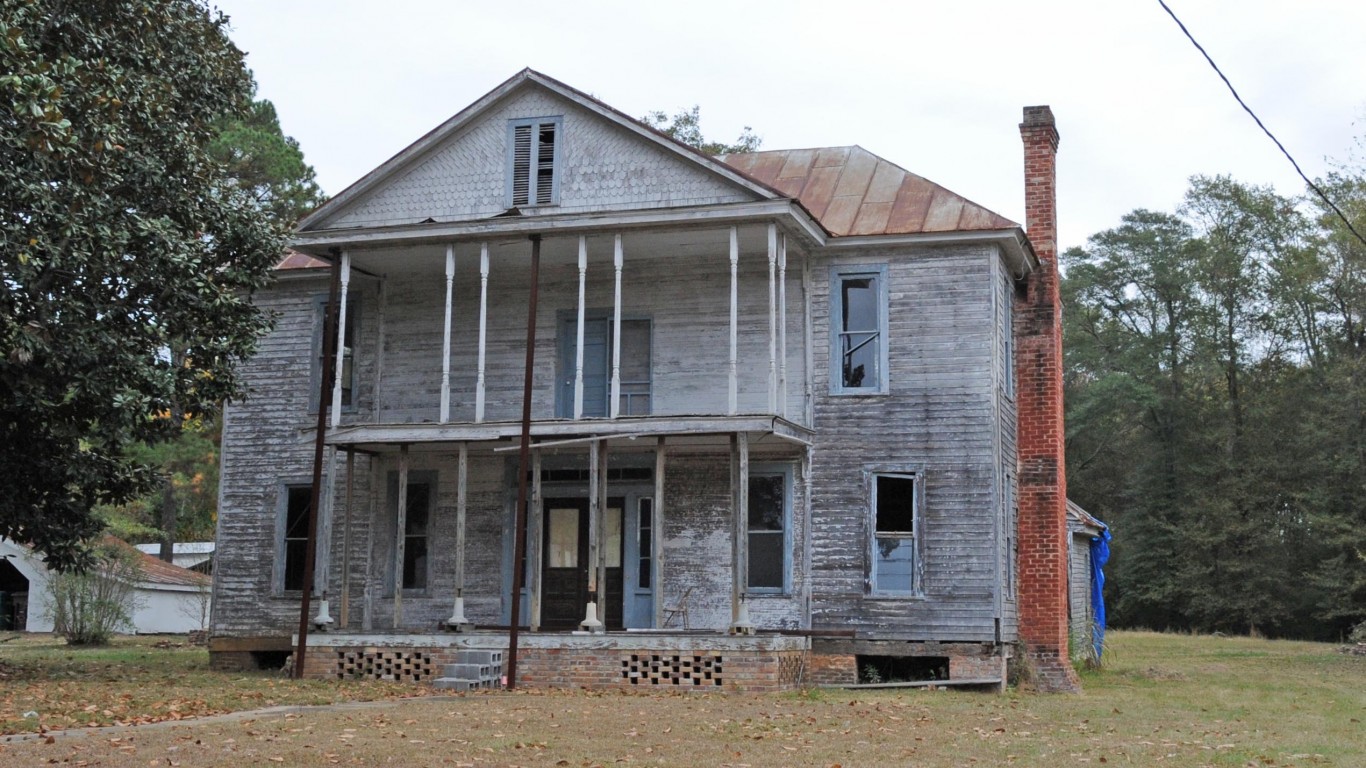
32. Greene County, Alabama
> 5-yr. pop. change: -5.7%
> Poverty rate: 38.7%
> Bachelor’s degree attainment: 10.1%
> Life expectancy at birth: 73.9 years
> Largest place in county: Eutaw
Greene County, located in west-central Alabama, is one of two counties in the state to rank on this list. The area is located in the state’s Black Belt, so named for its dark and fertile soils. Though agricultural jobs are far more concentrated than typical in the county, overall job availability is relatively limited, as the county’s 5.9% jobless rate is considerably higher than the 4.0% national rate. Over half of all area residents who are employed commute to jobs located outside the county.
Like other counties on this list, Greene County is poor. Most households earn less than $22,000 a year, and 22.7% of households live on less than $10,000 annually.
[in-text-ad-2]

31. Madison Parish, Louisiana
> 5-yr. pop. change: -4.8%
> Poverty rate: 37.8%
> Bachelor’s degree attainment: 12.6%
> Life expectancy at birth: 72.6 years
> Largest place in parish: Tallulah
Like most counties and county equivalents on this list, Lousiana’s Madison Parish is losing residents faster than it can bring them in. In the last five years, its population has declined by 4.8%. This decline is likely in part the result of a relative lack of economic opportunity. About one in every 10 members of the county’s labor force are unemployed.
For those who are working, incomes are generally low. Most area households earn less than $28,000 a year, and 37.8% of the population lives below the poverty line. Because of widespread financial insecurity, about one-quarter of households in Madison Parish rely on SNAP benefits to afford food.

30. Wolfe County, Kentucky
> 5-yr. pop. change: -1.0%
> Poverty rate: 32.3%
> Bachelor’s degree attainment: 7.6%
> Life expectancy at birth: 71.7 years
> Largest place in county: Campton
One of several rural Kentucky counties on this list, Wolfe County is located in the state’s Red River Gorge area of the Eastern Coal Field region. Like many coal-producing parts of the country, financial hardship is common in Wolfe County. Nearly a third of the local population lives below the poverty line, and about one in every five households live on less than $10,000 annually.
As is often the case in poorer parts of the country, educational attainment rates in Wolfe County are low. Just 7.6% of local adults have a bachelor’s degree, and fewer than 70% of the 25 and older population have completed high school.
[in-text-ad]
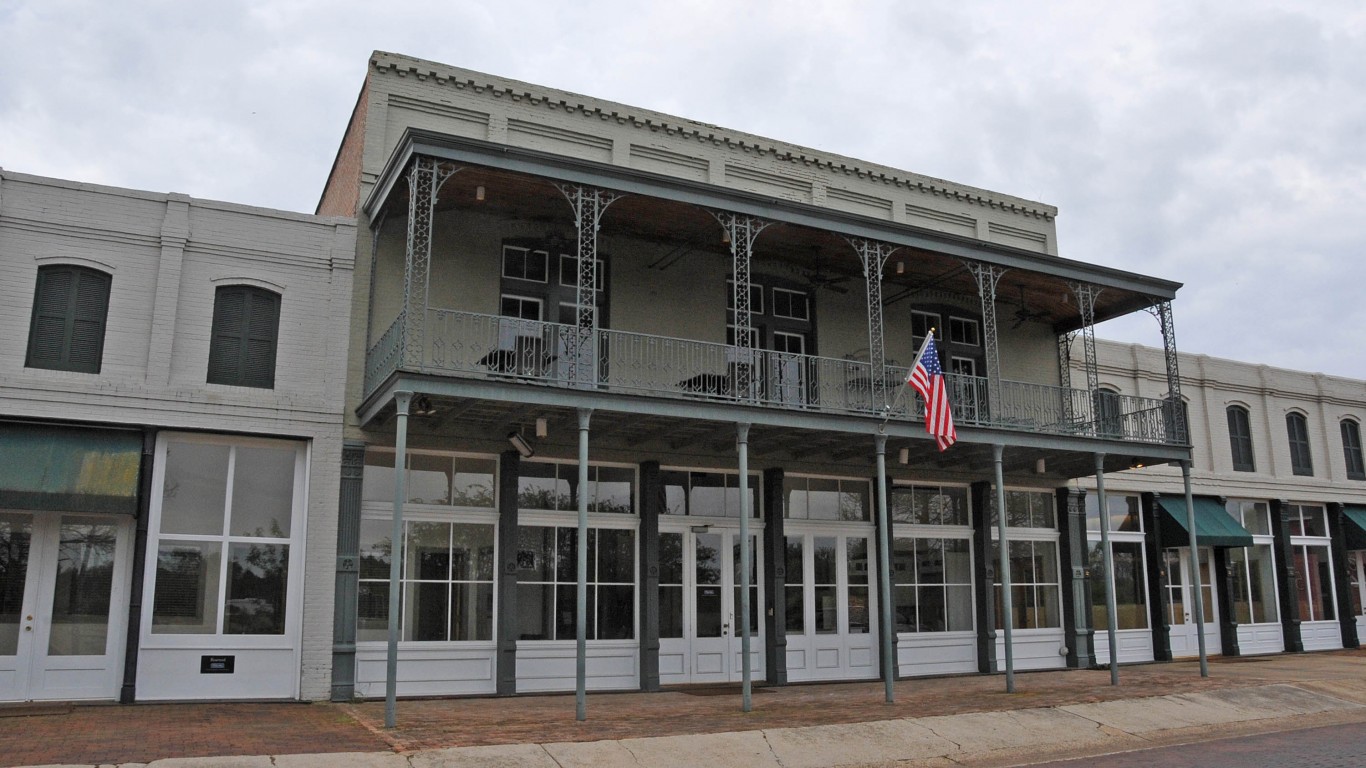
29. Leflore County, Mississippi
> 5-yr. pop. change: -6.8%
> Poverty rate: 39.2%
> Bachelor’s degree attainment: 17.5%
> Life expectancy at birth: 71.5 years
> Largest place in county: Greenwood
Leflore is one of five Mississippi counties to rank on this list. One of the least healthy counties in the United States, Leflore’s adult obesity rate is a staggering 42.3%. Additionally, nearly a third of local adults do not exercise, and more than one-fifth smoke, each far larger shares than the comparable national averages. Life expectancy at birth is also far lower than average in the county, at just 71.5 years, nearly eight years below the national average.
Americans who have a college education are more likely to have healthier lifestyles. In Leflore County, just 17.5% of the adult population has a bachelor’s degree compared to 31.5% of adults nationwide.

28. Bennett County, South Dakota
> 5-yr. pop. change: 0.2%
> Poverty rate: 34.6%
> Bachelor’s degree attainment: 18.4%
> Life expectancy at birth: 69.1 years
> Largest place in county: Martin
Bennett County lies within South Dakota’s Pine Ridge Reservation, an area that was originally set up in the late 19th century as a camp for indigenous prisoners of war. Today, the area is struggling with several social and economic problems. More than one-third of the county’s population lives below the poverty line, and by some estimates, over 80% of reservation residents suffer from alcoholism.
Drug abuse and addiction are also taking a toll on public health. There are about 157 accidental injury deaths — which are often the result of drug overdoses — for every 100,000 county residents, one of the highest injury death rates in the country and more than double the national rate of 67 per 100,000.

27. Galax, Virginia
> 5-yr. pop. change: -4.9%
> Poverty rate: 25.5%
> Bachelor’s degree attainment: 12.4%
> Life expectancy at birth: 66.9 years
> Largest place in county: N/A
Galax, Virginia, is the only independent city — and only place in Virginia — to rank on this list. Independent cities in Virginia have similar governance structures as counties. One of the least healthy places in the country, life expectancy at birth in Galax is just under 67 years — about 12 years below the national average.
Though the city’s January 2020 unemployment rate of 3.4% is below the 4.0% national rate and far better than the rate in the vast majority of counties and county equivalents on this list, employment opportunities in the area generally do not pay very well. Over a quarter of the city’s population lives in poverty, and the median annual household income is only about $32,000 a year. Nationwide, the poverty rate is 14.1%, and the median household income is about $60,000.
[in-text-ad-2]

26. Clay County, Georgia
> 5-yr. pop. change: -4.2%
> Poverty rate: 41.1%
> Bachelor’s degree attainment: 7.9%
> Life expectancy at birth: 75.4 years
> Largest place in county: Fort Gaines
Clay County is located in western Georgia along the state border with Alabama. One of the poorest parts of the country, Clay is one of only 14 counties or county equivalents nationwide where over 40% of the population lives below the poverty line. Low incomes in an area often mean that a larger than average share of the population would rely on government assistance to afford basic necessities. The SNAP recipiency rate in Clay County is 36.9%, more than triple the 12.2% share of households nationwide that receive SNAP benefits.
Financial hardship in the area is due in part to a lack of available jobs. Unemployment in Clay County stands at 7.5%, well above the comparable 4.0% national unemployment rate.

25. Dewey County, South Dakota
> 5-yr. pop. change: +6.6%
> Poverty rate: 30.2%
> Bachelor’s degree attainment: 16.0%
> Life expectancy at birth: 67.6 years
> Largest place in county: North Eagle Butte
Based on three key measures — poverty, bachelor’s degree attainment, and life expectancy — Dewey County, South Dakota, ranks as the 25th worst county to live in in the United States. Just over 30% of the county population lives below the poverty line. Americans living in poverty typically report far worse health outcomes than more financially secure Americans, and in Dewey County, life expectancy at birth is just 67.6 years, nearly 12 years below the national average.
As is often the case in the counties on this list, Dewey County has a weak job market. As of January, 6.9% of the labor force was unemployed, well above the 4.0% national unemployment rate.
[in-text-ad]
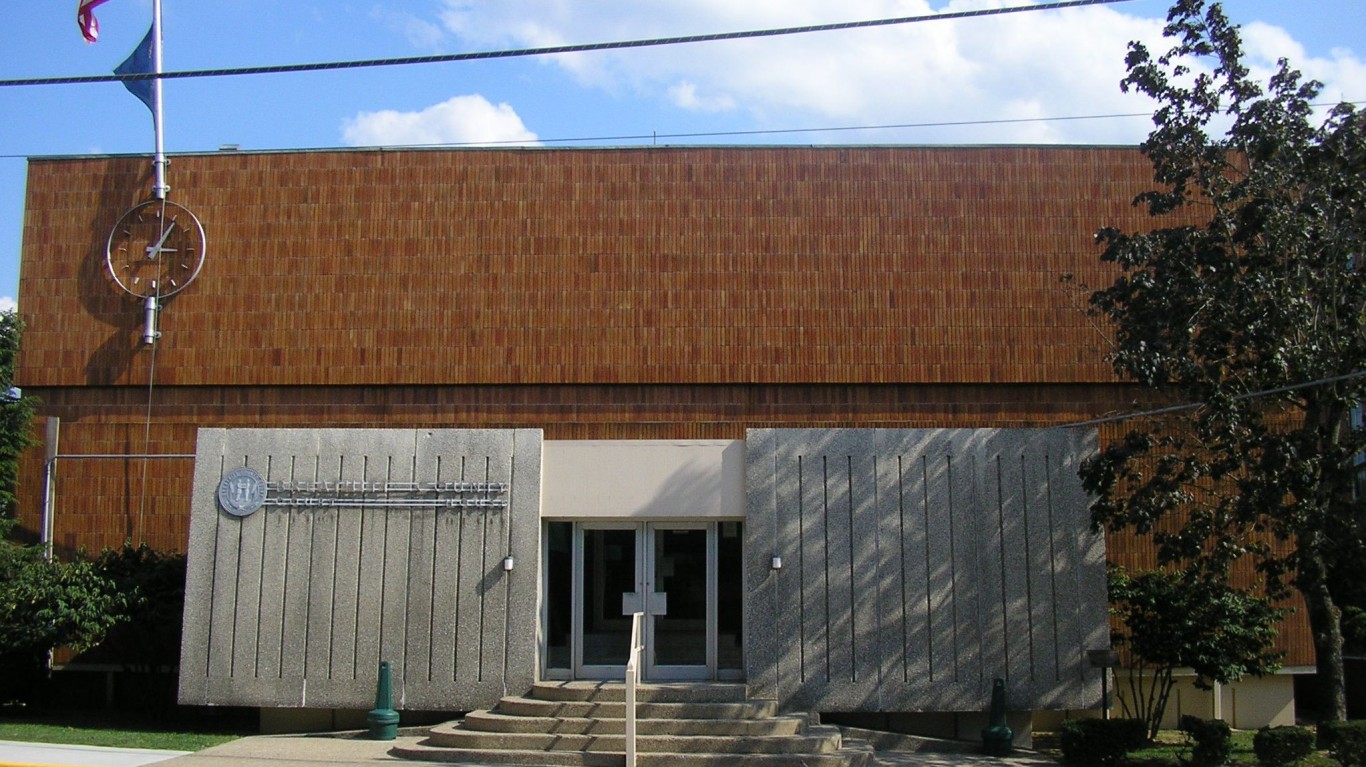
24. Breathitt County, Kentucky
> 5-yr. pop. change: -4.8%
> Poverty rate: 35.5%
> Bachelor’s degree attainment: 14.3%
> Life expectancy at birth: 70.4 years
> Largest place in county: Jackson
Breathitt County is one of eight counties in Kentucky to rank on this list. Higher educational attainment is tied to healthier lives and greater economic opportunity. In Breathitt County, just 14.3% of adults have a bachelor’s degree, less than half the 31.5% of adults nationwide. County residents are also more likely to face serious financial hardship than Americans nationwide as more than a third of the population lives below the poverty line.
Like most other counties on this list, Breathitt County is losing residents faster than it can bring them in. In the last five years the number of people living there fell by 4.8%.

23. Lee County, Kentucky
> 5-yr. pop. change: -10.6%
> Poverty rate: 33.5%
> Bachelor’s degree attainment: 10.3%
> Life expectancy at birth: 70.8 years
> Largest place in county: Beattyville
Lee County, Kentucky is located in the state’s Eastern Coal Field region. Like many coal-producing regions of the United States, Lee County’s economy is hurting. As of January, 6.6% of the county’s labor force was of work, well above the 4.0% national unemployment rate. The lack of jobs likely contributes to widespread financial hardship in the area. More than one in every three county residents live below the poverty line.
The high unemployment and low incomes have likely pushed many out of the county in recent years. Over the last half decade, the number of people living in Lee County declined by 10.6%.
22. Claiborne County, Mississippi
> 5-yr. pop. change: -4.5%
> Poverty rate: 44.0%
> Bachelor’s degree attainment: 19.1%
> Life expectancy at birth: 72.6 years
> Largest place in county: Port Gibson
Claiborne County, Mississippi is one of the poorest places in the United States. Most county households earn less than $27,000 a year, and one-in-every five households live on less than $10,000 annually. Additionally, a staggering 44.0% of the population lives below the poverty line, compared to the national poverty rate of 14.1%. Because so many in the area are struggling financially, the 25.7% share of area residents who rely on SNAP benefits is more than double the comparable share nationwide.
Lower-income Americans are less likely to be able to afford health care services as well as a wide range of healthy options related to diet and lifestyle, and they often report worse than average health outcomes. In Claiborne County, life expectancy at birth is just 72.6 years, more than six years below the national average.
[in-text-ad-2]
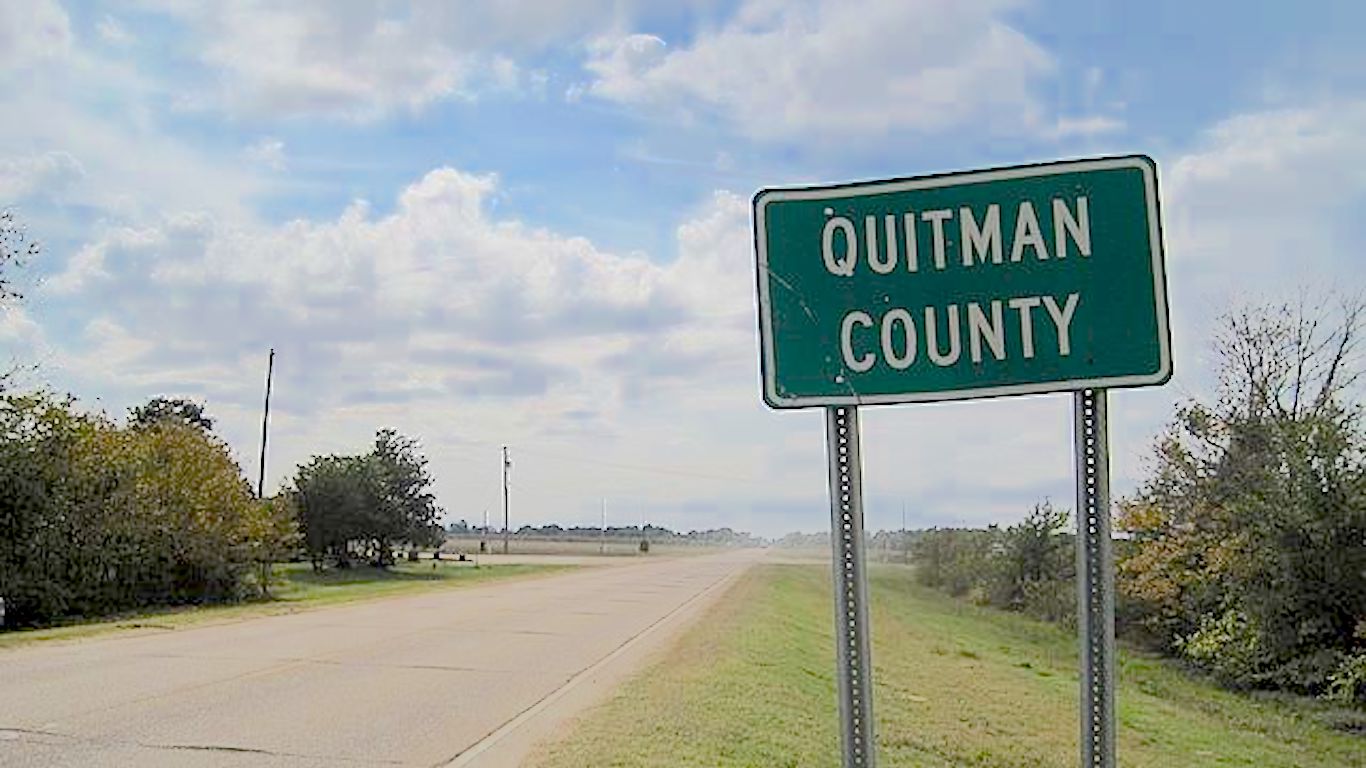
21. Quitman County, Mississippi
> 5-yr. pop. change: -8.2%
> Poverty rate: 35.5%
> Bachelor’s degree attainment: 11.4%
> Life expectancy at birth: 70.9 years
> Largest place in county: Marks
With one of the lowest life expectancies in the United States and one of the highest poverty rates, Quitman County ranks as among the worst U.S. counties to live in. Employment opportunities are relatively limited in the county. Less than half of workers who live in the county are also employed in the county, and as of January, 8.6% of the local labor force was unemployed, more than double the comparable national unemployment rate of 4.0%. The limited economic opportunity is likely driving out many county residents. Over the last five years, the number of people living there fell by 8.2%.

20. Leslie County, Kentucky
> 5-yr. pop. change: -6.7%
> Poverty rate: 35.6%
> Bachelor’s degree attainment: 9.7%
> Life expectancy at birth: 71.0 years
> Largest place in county: Hyden
Leslie County is one of several counties in Kentucky’s Eastern Coal Field region to rank on this list. Like many other coal-producing regions of the United States, Leslie County is struggling economically. A staggering 11.9% of the local labor force is unemployed, more than double the 4.0% national unemployment rate. Employment opportunities typically rise with educational attainment, and in the county, fewer than one in every 10 adults have a bachelor’s degree. Nationwide, over 30% of adults do.
[in-text-ad]
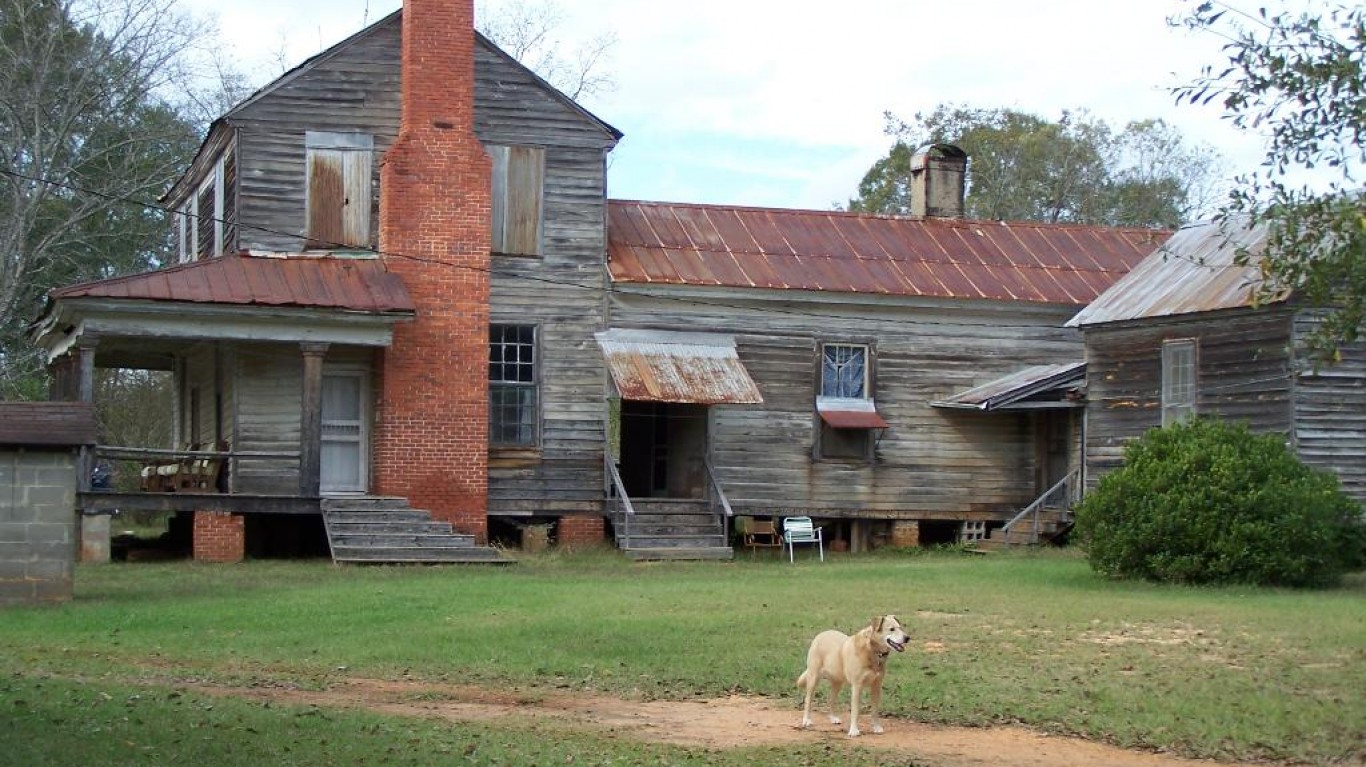
19. Perry County, Alabama
> 5-yr. pop. change: -8.7%
> Poverty rate: 41.8%
> Bachelor’s degree attainment: 15.7%
> Life expectancy at birth: 71.8 years
> Largest place in county: Marion
Perry County, located in west-central Alabama, is the only county in the state to rank on this list. One of the poorest counties in the United States, Perry’s poverty rate of 41.8% is more than triple the 14.1% national poverty rate. With widespread financial insecurity, the county has one of the highest SNAP recipiency rates of any U.S. county, with 38.8% of residents depending on government assistance to afford food, compared to 12.2% of Americans nationwide.
The stresses and challenges associated with living below the poverty line as well as the reduced ability to afford health care and a healthy lifestyle can have negative health consequences and ultimately reduce overall life expectancy. In Perry County, the average life expectancy at birth is just 71.8 years, compared to 79.1 years nationwide.

18. Harlan County, Kentucky
> 5-yr. pop. change: -6.5%
> Poverty rate: 36.2%
> Bachelor’s degree attainment: 10.8%
> Life expectancy at birth: 70.7 years
> Largest place in county: Cumberland
Harlan County, located in Kentucky’s Eastern Coal Field region along the Virginia state border, ranks among the worst counties to live in, largely due to widespread financial hardship. A staggering 36.2% of county residents live below the poverty line, more than double the 14.1% U.S. poverty rate. As is the case across much of the coal-producing Appalachian region, economic opportunity is scarce in Harlan County. A staggering 12.4% of the local labor force is unemployed, more than triple the 4.0% national unemployment rate.
Joblessness and poverty can increase the overall risk of mortality — and these conditions may help explain low average life expectancy in the country. Life expectancy at birth in the county is just 70.7 years, more than eight years below the national average.
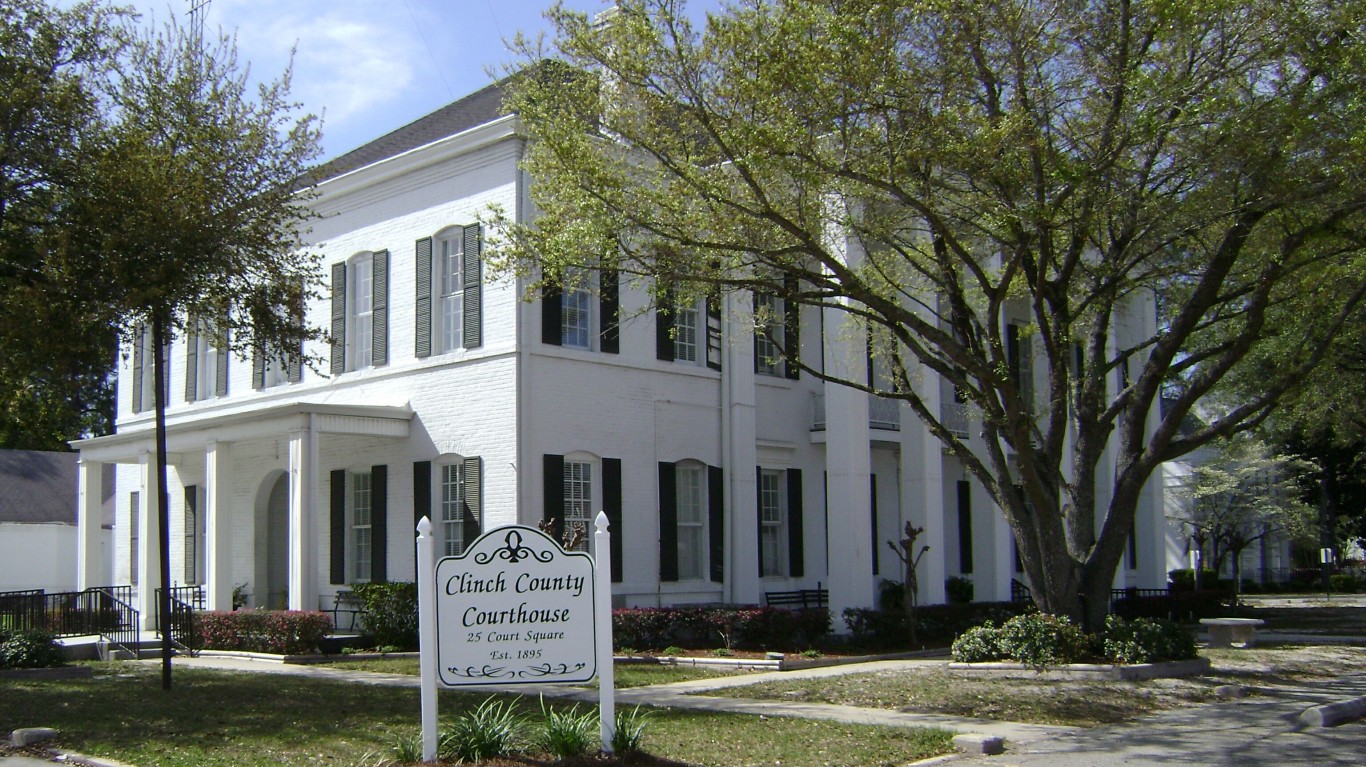
17. Clinch County, Georgia
> 5-yr. pop. change: -0.3%
> Poverty rate: 39.2%
> Bachelor’s degree attainment: 11.1%
> Life expectancy at birth: 71.6 years
> Largest place in county: Homerville
Clinch County, located in southern Georgia along the Florida border, is the only county in the state to rank on this list. Higher educational attainment typically translates to better health outcomes and greater economic opportunity. In Clinch County, just 11.1% of adults have a bachelor’s degree, well below the 31.5% share of adults nationwide. Many in the county are struggling financially as about one in every four area households live on less than $10,000 a year.
The presence of parks and recreation centers can encourage physical activity and improve overall quality of life. In Clinch County, just 5.1% of the population have easy access to such places, well below the 84.0% share of Americans nationwide who do.
[in-text-ad-2]

16. Owsley County, Kentucky
> 5-yr. pop. change: -5.8%
> Poverty rate: 34.7%
> Bachelor’s degree attainment: 16.2%
> Life expectancy at birth: 67.8 years
> Largest place in county: Booneville
Owsley County, Kentucky, is one of the least healthy counties in the United States. Life expectancy at birth in the county is just 67.8 years, about 12 years below the national average. Americans living below the poverty line are more likely to report poor health outcomes — and in Owsley County, more than one in every three residents live below the poverty line.
The relatively high prevalence of serious financial hardship would likely decline with an improved job market. As of January, 7.0% of the area’s labor force was unemployed, well above the 4.0% national unemployment rate.

15. Bell County, Kentucky
> 5-yr. pop. change: -4.3%
> Poverty rate: 37.1%
> Bachelor’s degree attainment: 8.9%
> Life expectancy at birth: 71.2 years
> Largest place in county: Middlesborough
Bell County, located in the southeastern corner of Kentucky on the Cumberland Gap, is one of eight counties in the state to rank on this list. While the county’s two mountain ridges, dense forests, and scenic beauty make it something of a tourist destination, tourism does not appear to give enough of a boost to the economy. As of January, the county’s unemployment rate stood at 7.8%, well above the 4.0% national rate.
With a weak job market, Bell County is home to a relatively large poor population. Some 37.1% of county residents live in poverty, more than double the 14.1% share of Americans.
[in-text-ad]
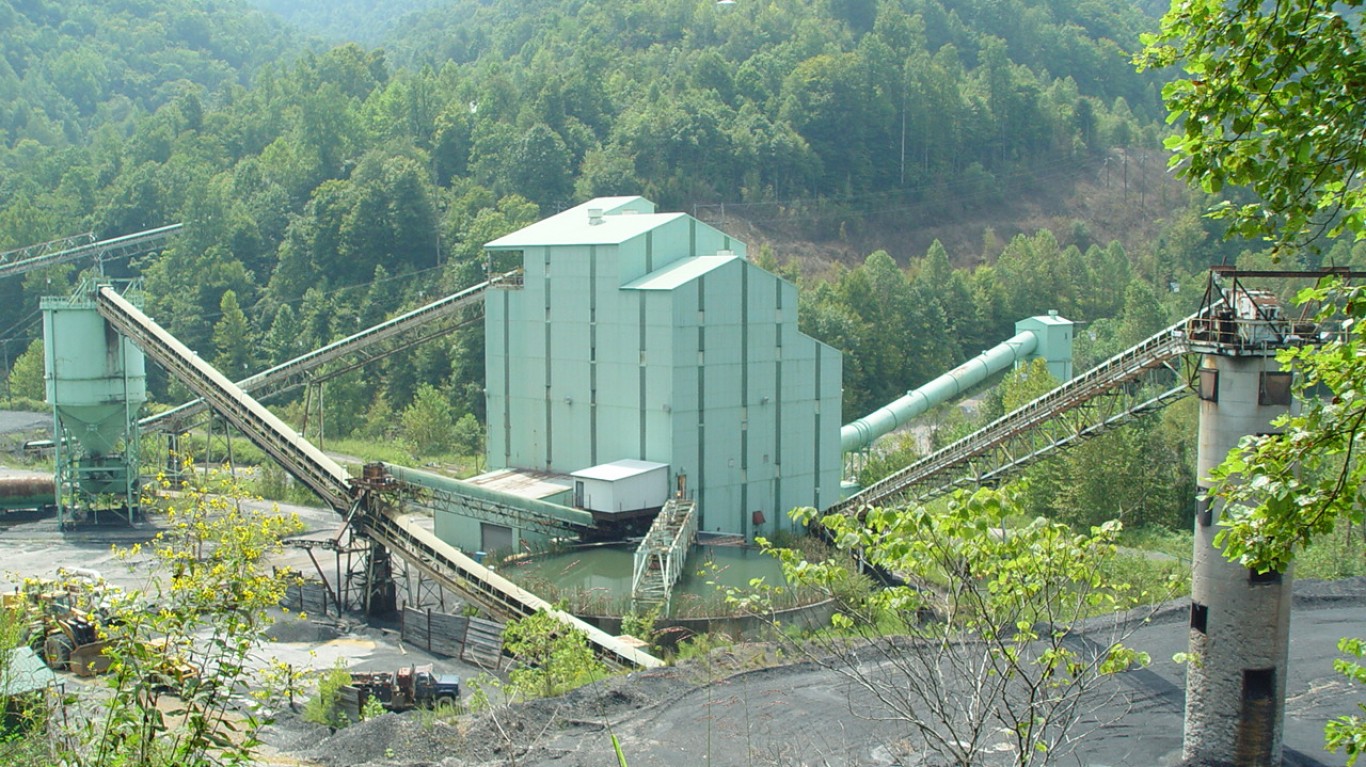
14. Clay County, Kentucky
> 5-yr. pop. change: -4.7%
> Poverty rate: 38.6%
> Bachelor’s degree attainment: 9.5%
> Life expectancy at birth: 71.5 years
> Largest place in county: Manchester
Clay County, Kentucky, borders two other counties in the state that also rank on this list — Bell and Owsley counties. As is the case in some of its neighboring counties, adults in Clay are far less likely than most Americans to have a college education. Just 9.5% of area residents 25 and older have a bachelor’s degree or higher compared to 31.5% of adults nationwide.
Adults who have completed college have greater access to economic opportunities and are more likely to have a healthier lifestyle. In Clay County, 38.6% of the population lives in poverty, and life expectancy at birth is just 71.5 years — compared to the 14.1% national poverty rate and the 79.1 year national life expectancy.
13. Sioux County, North Dakota
> 5-yr. pop. change: +3.6%
> Poverty rate: 36.5%
> Bachelor’s degree attainment: 16.2%
> Life expectancy at birth: 67.7 years
> Largest place in county: Cannon Ball
Sioux County covers the entirety of the North Dakota portion of the Standing Rock Indian Reservation. For a range of historical reasons and present day laws, reservations tend to struggle economically more than much of the country — and Sioux County is no exception.
More than a third of the county’s population lives below the poverty line, and over a quarter of all residents depend on government assistance to be able to afford food. At just 67.7 years, life expectancy at birth in the area is among the lowest in the United States and more closely aligned with outcomes common in Senegal or India.

12. McCreary County, Kentucky
> 5-yr. pop. change: -2.9%
> Poverty rate: 37.5%
> Bachelor’s degree attainment: 6.9%
> Life expectancy at birth: 71.1 years
> Largest place in county: Pine Knot
Of the eight Kentucky counties on this list, McCreary ranks as the worst. Home to the historic Barthell Coal Camp, which ceased production in 1961, McCreary, like many coal-rich parts of the Appalachian Region, is suffering economically. The majority of area households earn less than $24,000 a year, and about one in five households lives on less than $10,000 annually.
Economic opportunities typically expand with educational attainment. In McCreary County, just 6.9% of adults have a four-year college degree, a fraction of the 31.5% national bachelor’s degree attainment rate.
[in-text-ad-2]
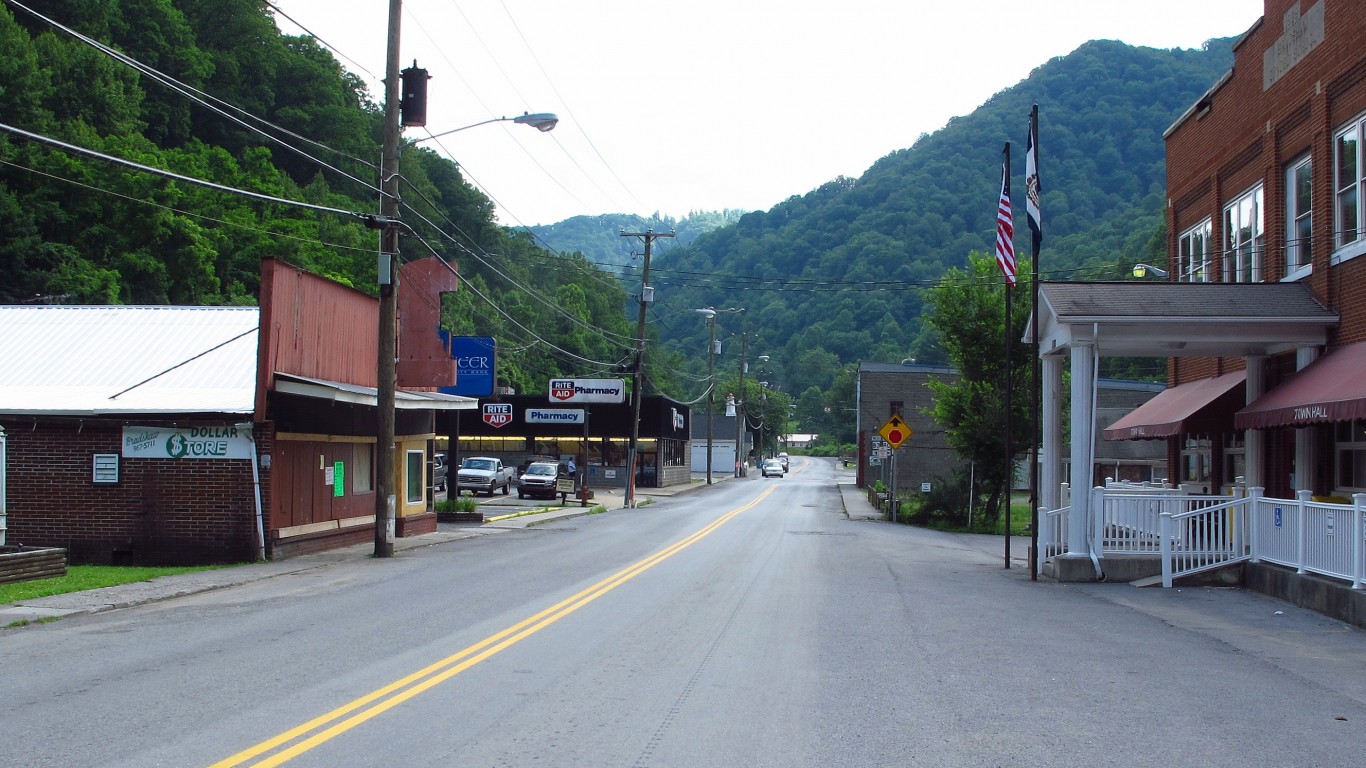
11. McDowell County, West Virginia
> 5-yr. pop. change: -11.2%
> Poverty rate: 33.3%
> Bachelor’s degree attainment: 5.4%
> Life expectancy at birth: 69.0 years
> Largest place in county: Welch
McDowell County, West Virginia, located in the heart of Appalachian coal country, has been decimated with the decline of American coal mining. Home to nearly 100,000 people at its peak in 1950, McDowell’s population is now less than 20,000, after declining by over 11% in the last five years alone.
Poverty is deeply entrenched in the county, and nearly a third of the local population relies on SNAP benefits to be able to afford food. Additionally, like many parts of West Virginia, McDowell County has been particularly hard hit by the opioid epidemic. Life expectancy at birth in the county is just 69 years, about a decade below the national average.
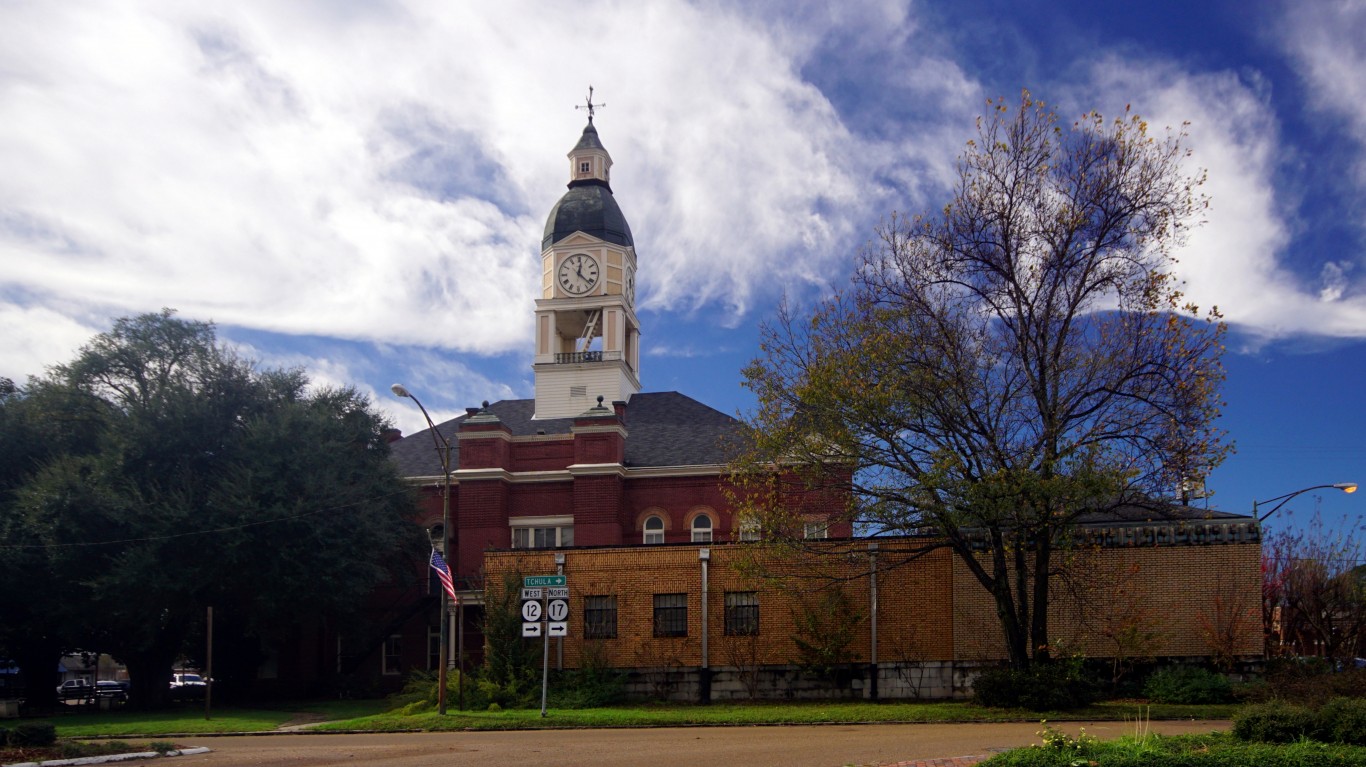
10. Holmes County, Mississippi
> 5-yr. pop. change: -4.5%
> Poverty rate: 43.6%
> Bachelor’s degree attainment: 9.9%
> Life expectancy at birth: 71.5 years
> Largest place in county: Durant
Holmes County is located in western Mississippi with the Yazoo River running along its western border and the Big Black River forming its eastern border. Only about one in every 10 adults in the area have a four-year college degree, and only about three out of four adults have completed high school. Incomes tend to go up with educational attainment, and in Holmes County, many are struggling financially. An estimated 27.5% of area households live on less than $10,000 a year, and a staggering 43.6% of the population lives below the poverty line, each among the largest shares of any U.S. county.
As is the case in many poor parts of the United States, Holmes County is losing residents faster than it can bring them in. In the last five years, the number of people living in the county declined by 4.5%.
[in-text-ad]
9. Jefferson County, Mississippi
> 5-yr. pop. change: -4.5%
> Poverty rate: 49.7%
> Bachelor’s degree attainment: 15.0%
> Life expectancy at birth: 72.1 years
> Largest place in county: Fayette
Jefferson County, located in the southwestern section of Mississippi, is one of four counties in the state to rank on this list — largely because it is one of the poorest counties in the United States. About half of the county’s 7,300 residents live below the poverty line, and about one-third of the population depends on SNAP benefits to afford food. The widespread poverty is partially the result of a lack of jobs. As of January, a staggering 16.7% of the local labor force was unemployed, well above the comparable 4.0% national unemployment rate.
The low incomes and job scarcity are likely pushing many out of the county. In the last half decade, the number of people living in Jefferson County fell by 4.5%.
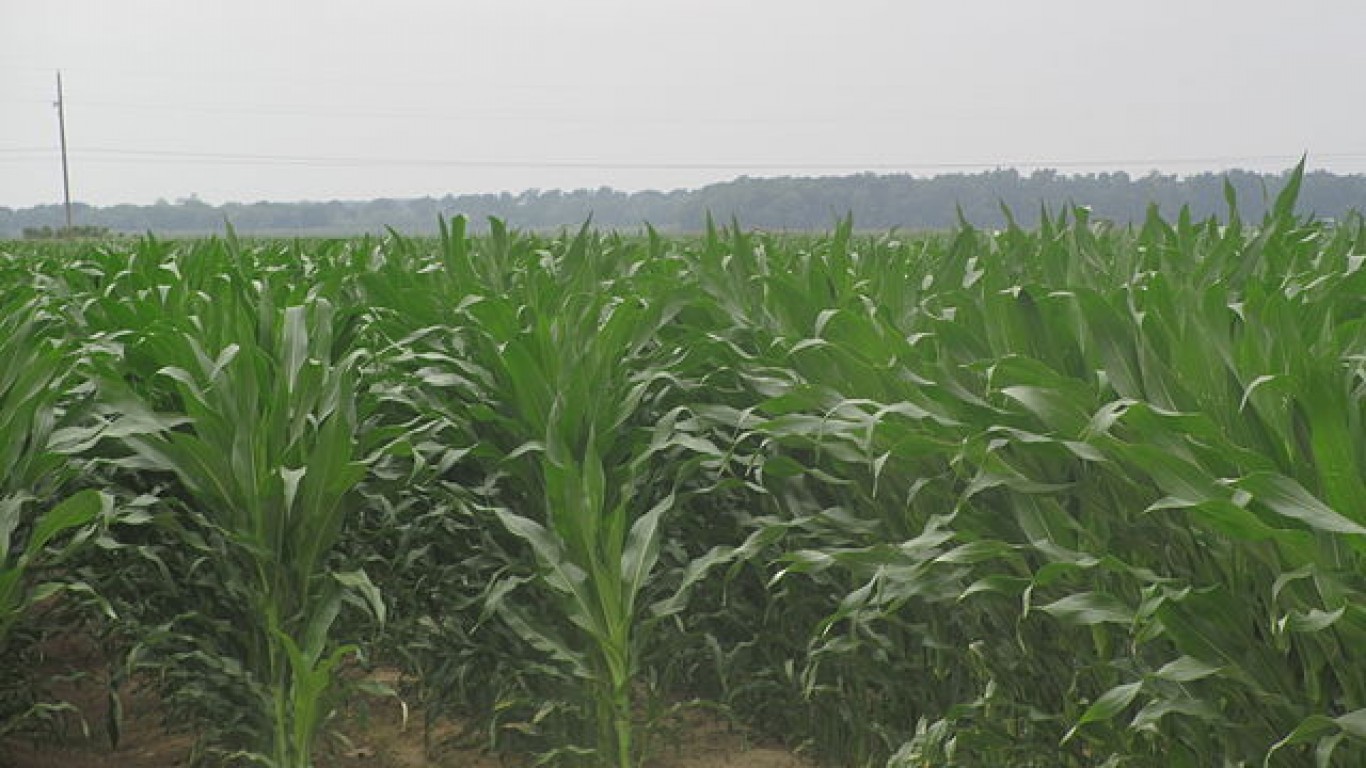
8. East Carroll Parish, Louisiana
> 5-yr. pop. change: -5.9%
> Poverty rate: 48.6%
> Bachelor’s degree attainment: 8.5%
> Life expectancy at birth: 73.1 years
> Largest place in parish: Lake Providence
Based on several key measures, East Carroll Parish ranks as the worst parish to live in in Louisiana and the eighth worst in the United States. East Carroll’s ranking on this list is due in large part to its nearly highest-in-the-country 48.6% poverty rate.
The area was formerly a cotton production hub, and though agricultural jobs are still more concentrated than average in the parish, employment opportunities in general are scarce. As of January, 12.6% of the local labor force was unemployed, more than three times the comparable national unemployment rate.
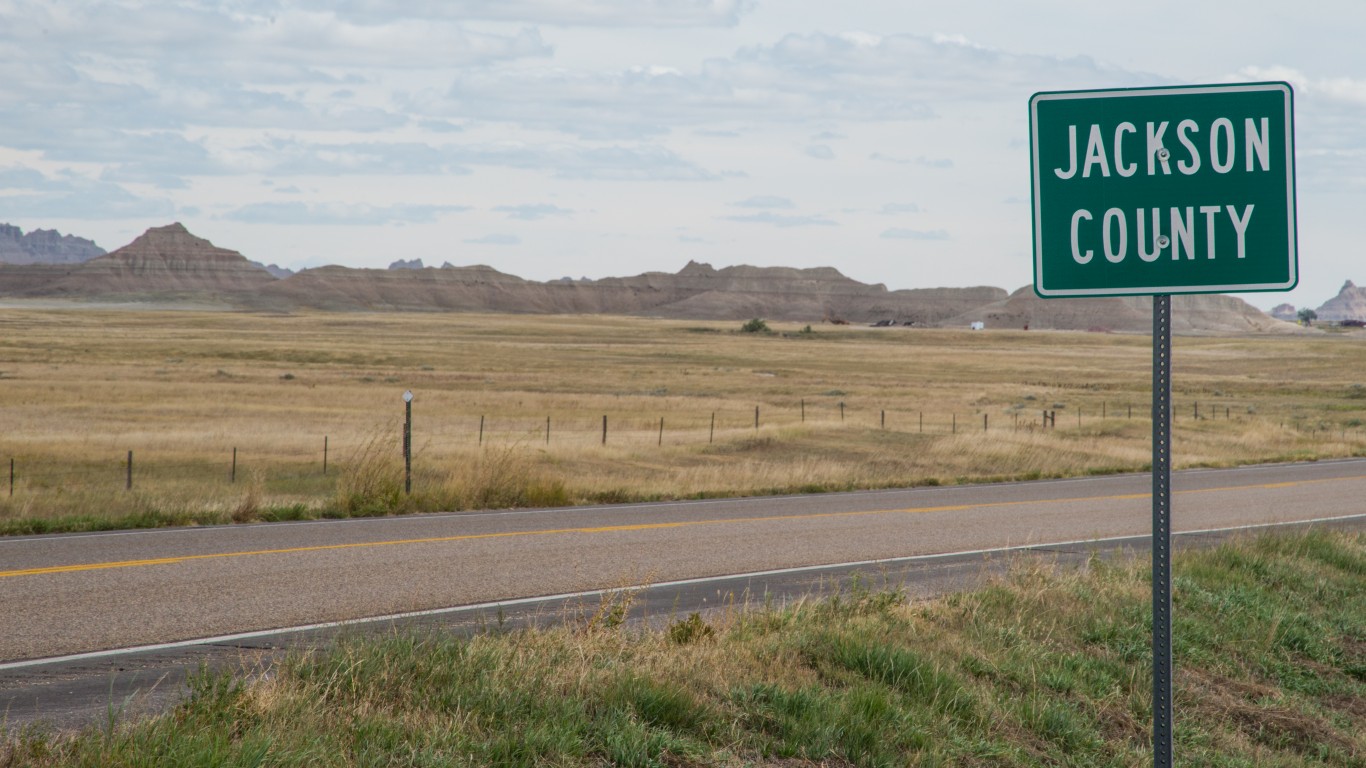
7. Jackson County, South Dakota
> 5-yr. pop. change: +5.5%
> Poverty rate: 47.7%
> Bachelor’s degree attainment: 20.5%
> Life expectancy at birth: 68.6 years
> Largest place in county: Kadoka
Covering part of the Pine Ridge Indian Reservation in South Dakota, Jackson County is one of several counties on this list that encompass tribal territory. Due to a number of historical factors, Native American reservations are typically economically depressed areas — and Jackson County is no exception. Unemployment in the area is higher than average at 6.5%, and nearly half of all area residents live below the poverty line.
Health outcomes among county residents are worse than they are in much of the rest of the country. This is especially pronounced in some critical measures like average life expectancy, which is just 68.6 years at birth, about a decade short of the U.S. average life expectancy.
[in-text-ad-2]
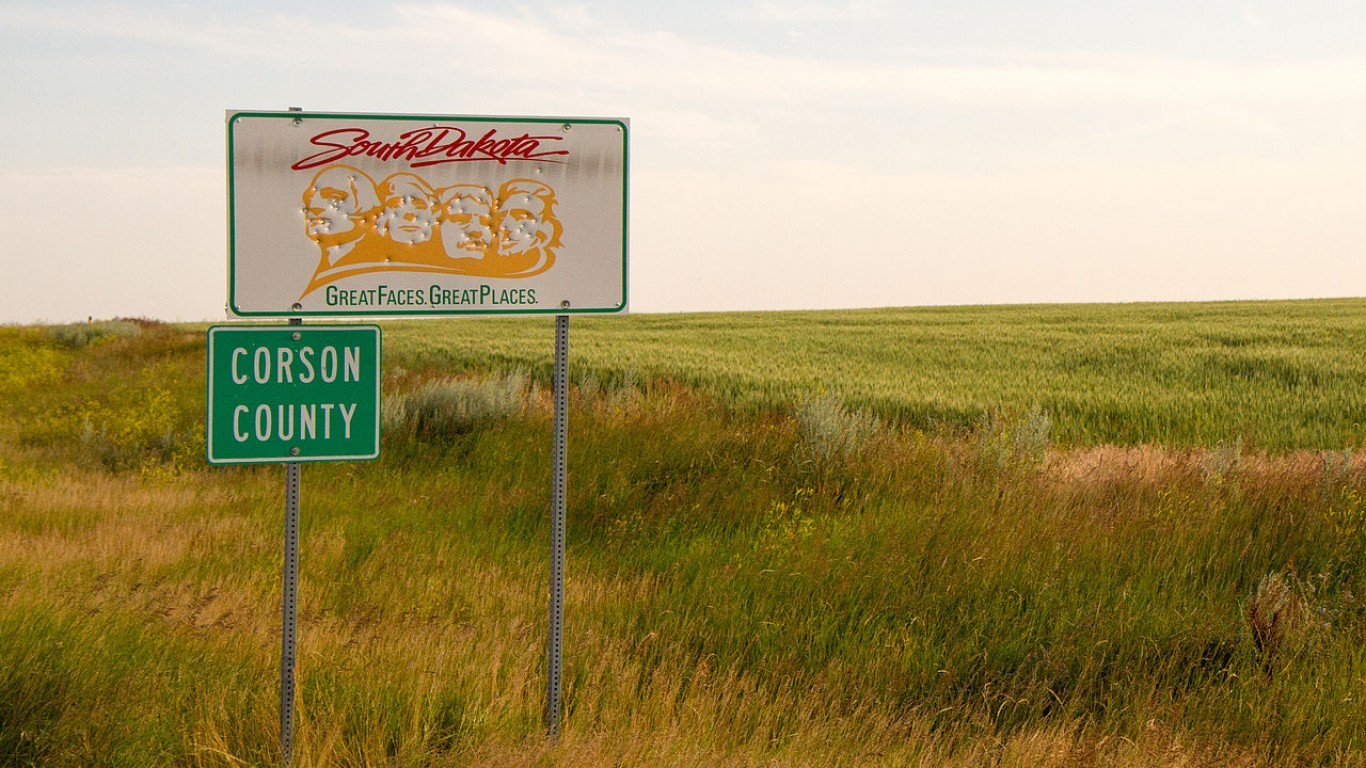
6. Corson County, South Dakota
> 5-yr. pop. change: +2.2%
> Poverty rate: 44.3%
> Bachelor’s degree attainment: 17.0%
> Life expectancy at birth: 66.5 years
> Largest place in county: McLaughlin
Corson County covers the South Dakota portion of the Standing Rock Indian Reservation. The self-governed reservation, which was formed in 1889, has some of the worst health outcomes of anywhere in the United States. Area residents are far more likely than most American adults to smoke and be obese and less likely to exercise. Such lifestyles and health factors may help explain the area’s low life expectancy at birth of 66.5 years, which is nearly the lowest of any U.S. county and more closely aligned with life expectancy in Kenya.
Worse health outcomes are more common among poorer populations, as lower-income Americans are more likely to struggle to afford health care as well as healthy options related to diet and lifestyle. In Corson County, 44.3% of residents live below the poverty line, compared to 14.1% of Americans nationwide.

5. Kusilvak Census Area, Alaska
> 5-yr. pop. change: N/A
> Poverty rate: 40.5%
> Bachelor’s degree attainment: 4.8%
> Life expectancy at birth: 67.2 years
> Largest place in county: N/A
The Kusilvak Census Area is the only county or county equivalent in Alaska to rank in this list — and the only county or county equivalent outside of South Dakota to rank among the five worst counties to live in. Kusilvak’s low ranking on this list is due in large part to educational attainment. College-educated adults tend to lead healthier lives and typically benefit from more economic opportunities, and in Kusilvak, just 4.8% of adults have a bachelor’s degree, compared to 31.5% of adults nationwide.
Kusilvak is also a poor area, and a majority of residents depend on federal government assistance to be able to afford food. An estimated 59.9% of area households receive SNAP benefits, the largest share of any U.S. county or county equivalent.
[in-text-ad]

4. Mellette County, South Dakota
> 5-yr. pop. change: -0.8%
> Poverty rate: 48.3%
> Bachelor’s degree attainment: 13.7%
> Life expectancy at birth: 67.6 years
> Largest place in county: White River
Mellette County, South Dakota, covers part of the Rosebud Indian Reservation, which is among the most economically strained communities in the United States. Native Americans commonly face extreme generational poverty resulting, in part, from their historical mistreatment by the U.S. government, and in Mellette County, 48.3% of residents live below the poverty line.
Low-income areas typically report worse than average health outcomes, and Mellette County is no exception. Over a third of all county residents are obese, and life expectancy at birth is just 67.6 years on average. Dangerous behavior also appears to be relatively common as 60% of all driving deaths in the county involve alcohol, double the national share.

3. Buffalo County, South Dakota
> 5-yr. pop. change: +4.4%
> Poverty rate: 39.2%
> Bachelor’s degree attainment: 9.4%
> Life expectancy at birth: 62.6 years
> Largest place in county: Fort Thompson
Buffalo County, located in central South Dakota, is one of the four counties in the state to rank among the five worst counties to live in nationwide. The county covers part of the Crow Creek Reservation along the Missouri River. Health outcomes on reservations tend to be poorer than in most of the country, and in Buffalo County, life expectancy at birth is just 62.6 years, 16 years less than the national average and nearly the lowest of any U.S. county.
A low-income area, nearly 18% of households in Buffalo County live on less than $10,000 a year. Additionally, nearly half of the county’s population depends on SNAP benefits to afford food.
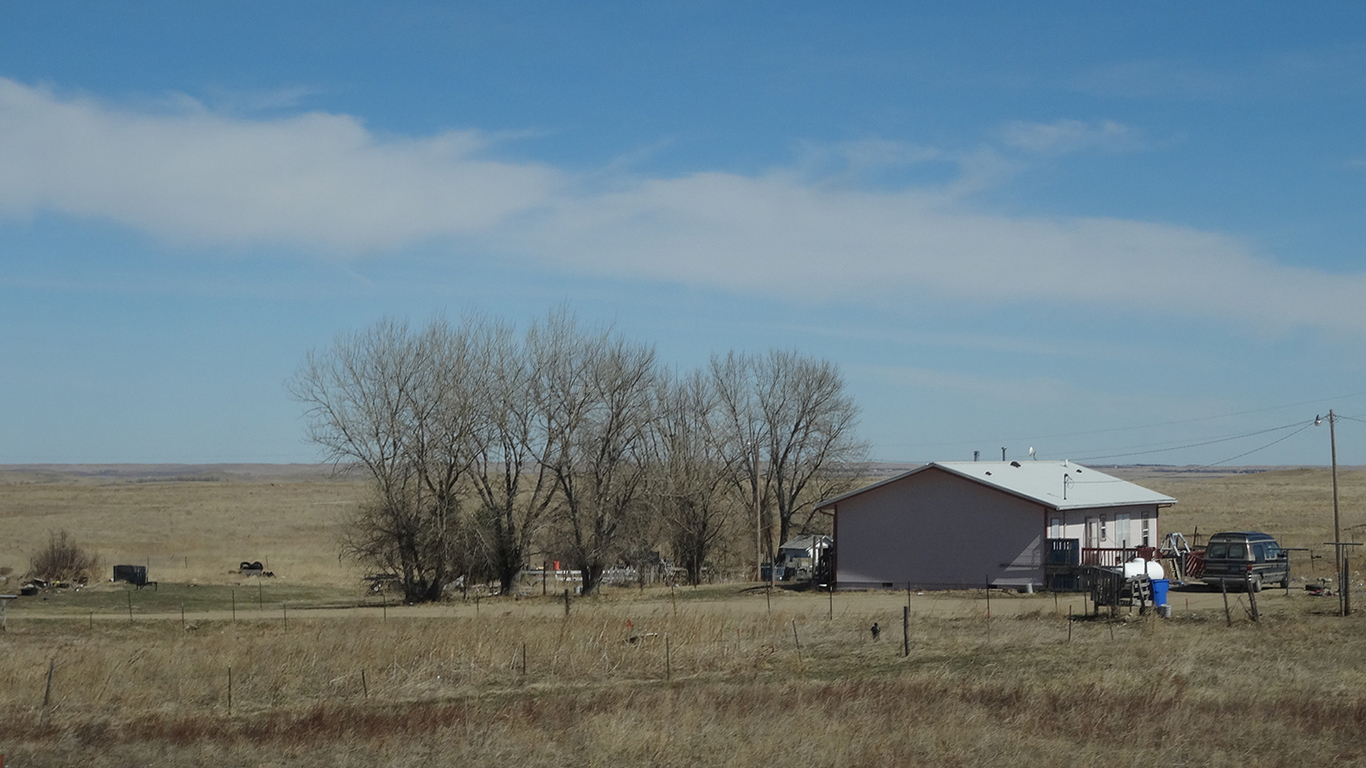
2. Todd County, South Dakota
> 5-yr. pop. change: +3.7%
> Poverty rate: 55.1%
> Bachelor’s degree attainment: 15.8%
> Life expectancy at birth: 67.6 years
> Largest place in county: Rosebud
Along with Mellette County, Todd County is one of two counties on this list that cover parts of South Dakota’s Rosebud Indian Reservation. One of the poorest counties in the United States, Todd County has a poverty rate of 55.1% — nearly four times the U.S. poverty rate of 14.1%.
In recent years, drug abuse and addiction have wreaked havoc in Todd County. Many attribute the problem to desperation, but whatever the causal factors, the result has been devastating. There are about 202 accidental injury deaths — which are often the result of drug overdoses — for every 100,000 county residents, one of the highest accidental injury death rates in the country and more than triple the national rate of 67 per 100,000.
[in-text-ad-2]
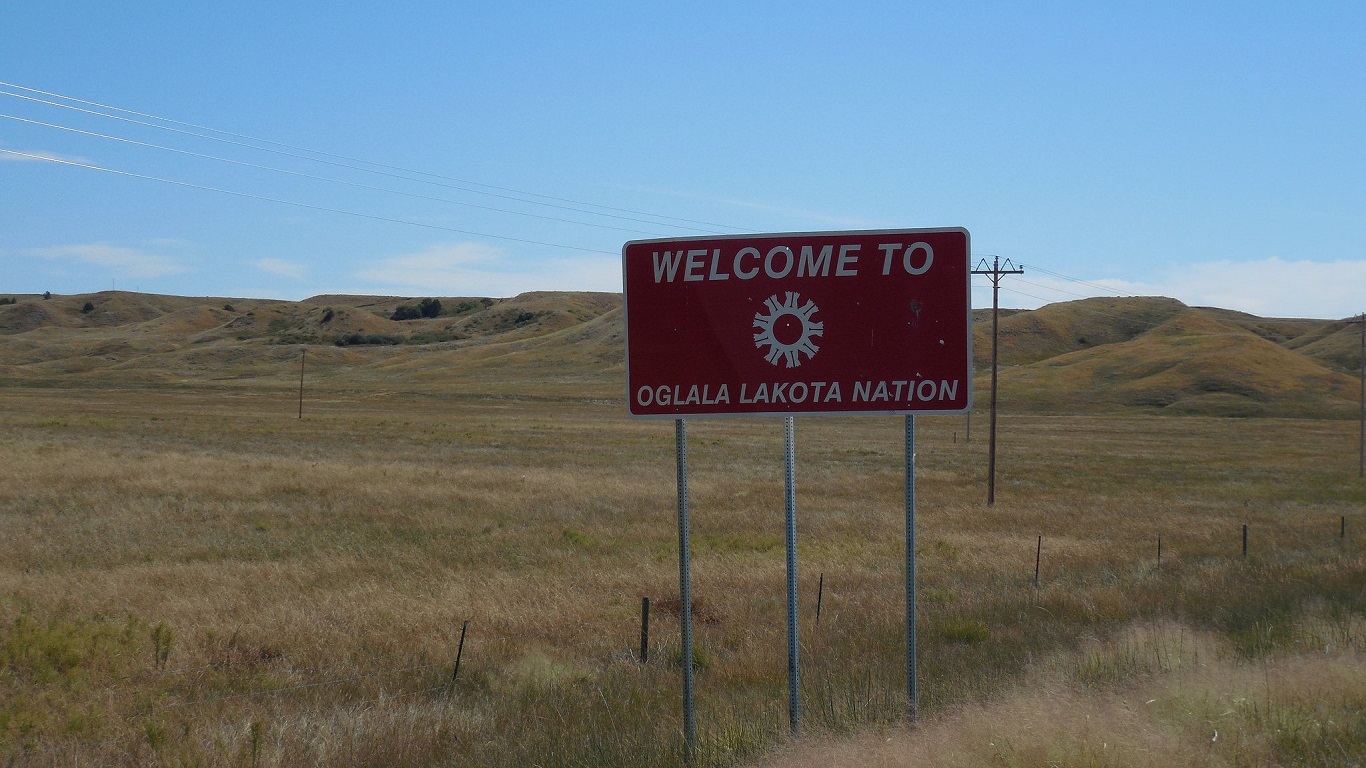
1. Oglala Lakota County, South Dakota
> 5-yr. pop. change: N/A
> Poverty rate: 49.3%
> Bachelor’s degree attainment: 11.8%
> Life expectancy at birth: 62.4 years
> Largest place in county: N/A
Based on poverty, bachelor’s degree attainment, and life expectancy, Oglala Lakota County, South Dakota, ranks as the worst county to live in the United States. The county covers much of the Pine Ridge Reservation, and due to both historical mistreatment by the U.S. government and some unique conditions reservations face today, Native Americans are among the most economically marginalized groups in the United States.
In Oglala Lakota County, nearly half of the population lives below the poverty line. Poverty is associated with lower life expectancy, and when poverty is coupled with other problems faced in the area such as obesity, high smoking rates, and high drug overdose rates, health outcomes in Oglala Lakota are among the worst nationwide. Life expectancy at birth in the county is just 62.4 years, the lowest of any U.S. county and more in line with life expectancy in Niger than the 79.1 year U.S. average.
Methodology
To determine the worst counties to live in, 24/7 Wall St. constructed an index of three measures: poverty, bachelor’s degree attainment among adults, and average life expectancy at birth.
Data on the share of individuals living below the poverty line, as well as the share of adults 25 and older with at least a bachelor’s degree came from the 2018 U.S. Census Bureau’s American Community Survey and are five-year estimates.
Data on average life expectancy at birth came from the 2019 County Health Rankings, a joint program of the Robert Wood Johnson Foundation and University of Wisconsin Population Health Institute, and are based on mortality data from the years 2016 to 2018.
Supplemental data on population, income, and food stamp recipiency are five years estimates from the ACS. Data on unemployment in January 2020 came from the Bureau of Labor Statistics and are not seasonally adjusted.
Find a Qualified Financial Advisor (Sponsor)
Finding a qualified financial advisor doesn’t have to be hard. SmartAsset’s free tool matches you with up to 3 fiduciary financial advisors in your area in 5 minutes. Each advisor has been vetted by SmartAsset and is held to a fiduciary standard to act in your best interests. If you’re ready to be matched with local advisors that can help you achieve your financial goals, get started now.
Thank you for reading! Have some feedback for us?
Contact the 24/7 Wall St. editorial team.
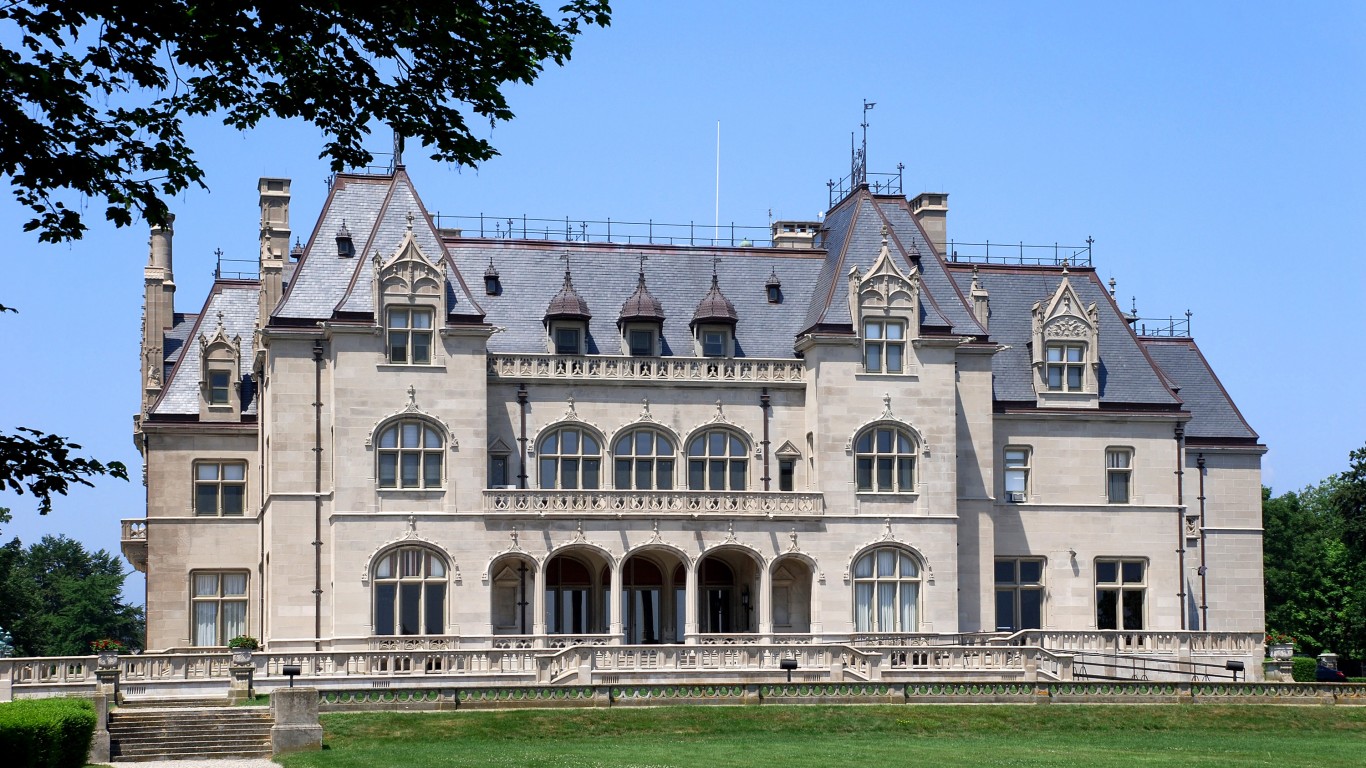 24/7 Wall St.
24/7 Wall St.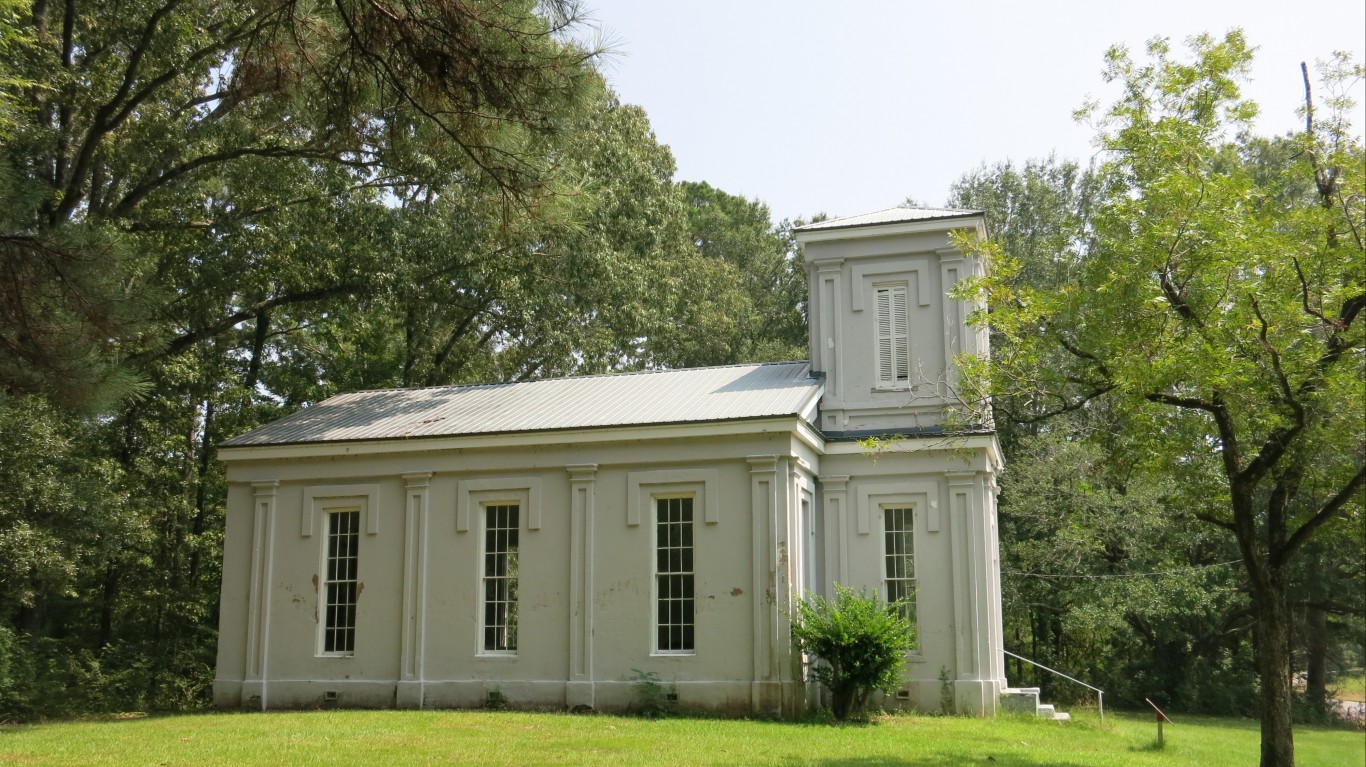
 24/7 Wall St.
24/7 Wall St.

 24/7 Wall St.
24/7 Wall St.

